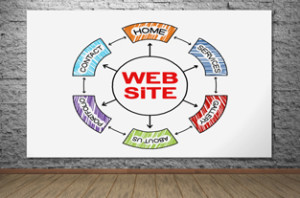Top 10 Things Every Website Needs
by aschmidt
 Getting found online is half the battle – once people click through to your website, you’ve got to keep them there and hopefully get them to convert into leads. So what kinds of things do you need to have on your website to accomplish all this? Glad you asked. Here are the top 10 things every website needs:
Getting found online is half the battle – once people click through to your website, you’ve got to keep them there and hopefully get them to convert into leads. So what kinds of things do you need to have on your website to accomplish all this? Glad you asked. Here are the top 10 things every website needs:
- An easy-to-update CMS
One of the first problems people run into is that it’s difficult to update their website. Either they’re unable to do it themselves or they’ve hired out website management and maintenance, which is fine, except that when a change is needed it sometimes takes a considerable amount of time for it to actually happen. There are a number of intuitive, easy-to-use and update Content Management Systems (CMS) that are customizable and widely known to developers, like WordPress, Joomla, Drupal, ExpressionEngine and many others. - Responsive design
A responsive website is a website designed to change its look based on the device it’s viewed on. For instance, if a customer views your website on their desktop, and then switches to their phone, the site won’t just appear desktop-sized on the smaller screen – that would look cramped and chaotic. A responsive design simplifies your site and makes it easy to read on a smaller device. This component of a website is critical because more and more people browse the internet, shop and socialize on their phones and tablets, and your website must allow them to easily switch devices without losing them. - Helpful navigation
Once your visitors get to your website, they should be able to find where they want to go within seconds. A drop-down navigation bar at the top of your site is a common and very simple way to organize the pages and links on your website. Plan out your site map in a logical way, then make sure that each link goes to the appropriate page. Broken links or links that misdirect visitors will cause them to lose interest in your site or become frustrated and ultimately leave. - Strong brand identity
Before you begin a site redesign, think carefully about how you want your brand portrayed. Consider color scheme, font, the type of graphics and photos, how much content and empty space you’ll use, the tone of voice and message of your brand… All of these things go into creating a cohesive identity that will subtly inform your visitor of who you are and what you do. A confused brand identity will leave your visitors unsure of and unable to relate to your company. - High-quality content
Every page on your website should have well-written, keyword-rich content. Search engines crawl sites looking for content that is readable, valuable and updated often and then serve those sites up higher in results than those that don’t. So whatever page – be it service listings, pricing, history, testimonials – make sure that you have engaging, useful and informative content on it. - A blog
As mentioned earlier, search engines favor sites with high-quality content that’s updated regularly. The very best way to ensure your site has this key feature is to start a business blog. To make search engines happy, post on a regular basis, keeping your website updated with fresh content, and post informative content that positions your business as a thought leader – that’s some high-quality stuff! - Clear calls-to-action
Being clear about what you want your site visitors to do helps direct them and alleviate confusion. Throughout your site, be specific – whether you want them to subscribe to your blog, fill in a contact form, download content, etc. Use powerful, active and urgent language (Buy/Donate/Register/Subscribe/Download Now!) and position a call-to-action on every page above the fold. - Contact information
Have your business’s address, phone number and email listed in a footer that appears on every page – that way no matter where your visitors go on your site, they’ll know how to get a hold of you. You can also create a “Contact Us” page in addition to your footer, making it obvious that you value feedback, questions and customer interaction. - Social media buttons
A website without the support of social media is missing a huge opportunity to connect with potential customers. Almost everyone who uses the Internet also has a social media profile on some network. So include links to your business’s social profiles and add “share” buttons to your content. If you haven’t already, consider creating business pages on Twitter, Facebook, LinkedIn, Google+, YouTube and Pinterest. - Security features
This is something that’s most important to websites where visitors may enter credit card or other sensitive information. Chances are your site is secure, but visitors will trust you even more when you install further security features on your site and show them through a graphic that says “secured by…” Even if you don’t sell things through your website, let people know that any information they provide (name, email, address, etc.) to download content or subscribe to a newsletter or blog is safe with you and that you won’t sell it or use it for other than the intended purpose.
SHARE
Posted in Content Creation, Inbound Marketing, SEO
